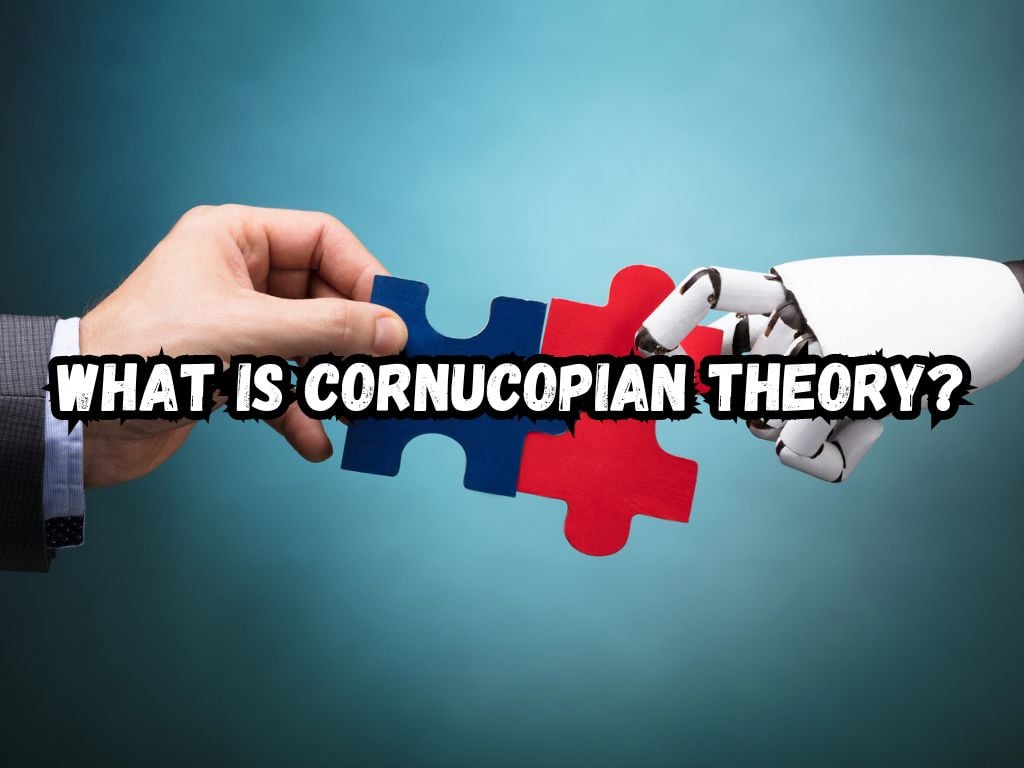In discussions about the future of our planet, resource management, and sustainability, the Cornucopian Theory offers an intriguingly optimistic perspective.
It suggests that human innovation and technological advancement can provide endless resources and solutions to environmental challenges.
This concept challenges more traditional, pessimistic views that predict inevitable resource scarcity due to population growth and consumption patterns.
By delving into what is cornucopian theory, we uncover a narrative of hope and creativity in facing the world’s pressing issues.
What Is Cornucopian Theory?
The foundation of Cornucopian Theory draws from the idea that human ingenuity is the ultimate resource, more pivotal than physical resources in determining our future. The term itself, derived from the mythical “horn of plenty,” encapsulates a vision of endless abundance facilitated by human innovation.
This perspective gained prominence in the mid-20th century, contrasting sharply with Malthusian theories that foresaw doom due to overpopulation and resource depletion.
Economists and thought leaders like Julian Simon emerged as champions of Cornucopian ideas, arguing that market-driven technology would continually overcome perceived limits to growth.

Development Through Decades
Since its inception, the theory hasn’t remained static; it evolved through debates, global economic shifts, and technological breakthroughs.
Each phase of technological innovation, from the Green Revolution in agriculture to the Information Age, served as evidence for Cornucopians that constraints can be overcome.
This adaptive theory reflects the dynamic nature of human progress and markets, adjusting to new challenges and opportunities.
Key Principles of Cornucopian Theory
Central to Cornucopian thought is the belief in technology and market mechanisms as the drivers of sustainability and resource abundance.
This section outlines the theory’s core principles and their implications.
Unbounded Innovation
Cornucopian proponents trust in the limitless potential of human innovation to solve any resource-related challenge.
They argue that scarcity is a temporary state, one which drives the innovation necessary to either find new resources or create efficient alternatives.
Market Mechanisms
Market forces are seen as effective tools for addressing scarcity and environmental issues.
In this view, rising prices of scarce resources incentivize the development of alternatives, driving technological advances that lead to more sustainable solutions and, ultimately, more available resources.
Criticisms and Counterarguments
Although Cornucopian Theory presents a hopeful outlook, it faces criticism from environmentalists and scholars who caution against its seemingly boundless optimism.
Critics argue that it underestimates the ecological limits of our planet and overestimates technology’s ability to solve complex environmental issues.
Furthermore, the reliance on market mechanisms is criticized for not always aligning with environmental sustainability goals, leading to overexploitation and degradation of natural resources.
A Balanced Perspective
In response, some Cornucopians acknowledge these critiques, calling for a balanced approach that considers both the potential and the limits of innovation and markets.
They advocate for responsible resource management and environmental stewardship, alongside the pursuit of technological solutions.
The Relevance of Cornucopian Theory Today
In the contemporary context, Cornucopian Theory intersects with pressing global challenges, from climate change to resource scarcity.
Its emphasis on innovation and technology finds echoes in initiatives aimed at renewable energy, sustainable agriculture, and green technologies.
While debates continue regarding the feasibility and ethics of a wholly Cornucopian approach, its core premise—that human ingenuity can navigate us towards a sustainable future—remains influential in policy, research, and development discussions.

Historical Context of Cornucopian Theory
The Cornucopian Theory, rooted in the optimistic belief that human ingenuity can overcome resource scarcity, has been shaped by historical events and key figures.
Its genesis can be traced back to the Enlightenment era, where faith in progress and reason began to flourish.
Thinkers like Julian Simon, an economist who argued against the notion of overpopulation and resource depletion, played a pivotal role.
Simon’s famous wager with Paul Ehrlich, a proponent of Malthusian views on population growth outstripping resources, highlighted this optimism; Simon bet that the price of metals would decrease, indicating resource availability would not be constrained as Ehrlich predicted – and Simon won.
The Industrial Revolution further bolstered Cornucopian thoughts by demonstrating how technological advancements could lead to unprecedented growth and solve seeming resource limitations.
This historical context underscores the theory’s central belief in technological progress as the linchpin for overcoming environmental and resource-based challenges.
Frequently Asked Questions
What is the Cornucopian Theory?
It’s the belief that human ingenuity and technological advancements can indefinitely overcome environmental constraints and resource scarcity.
Who is a key figure associated with Cornucopian Theory?
Julian Simon, an economist, significantly contributed to shaping the theory with his optimistic outlook on human progress.
How does Cornucopian Theory differ from Malthusian Theory?
While Malthusian Theory emphasizes resource limits and population control, Cornucopian Theory believes in limitless resource availability through innovation.
Can technological advancement indefinitely sustain resource availability?
Cornucopians argue yes, believing technology will always provide solutions to potential resource shortages.
What are criticisms of Cornucopian Theory?
Critics argue it underestimates environmental degradation risks and overestimates technology’s ability to solve all resource issues.
Conclusion
Cornucopian Theory offers a distinctive lens through which to view our world and its future, characterized by optimism in human potential and technological progress.
While it invites valid critiques and demands careful consideration of its assumptions, the theory also encourages us to consider the possibilities innovation brings.
As we confront environmental challenges and resource limitations, integrating the insights of Cornucopian thought with a mindful approach to sustainability might help us navigate the path to a prosperous future for all.


 Tags:
Tags:










